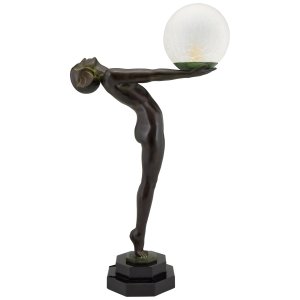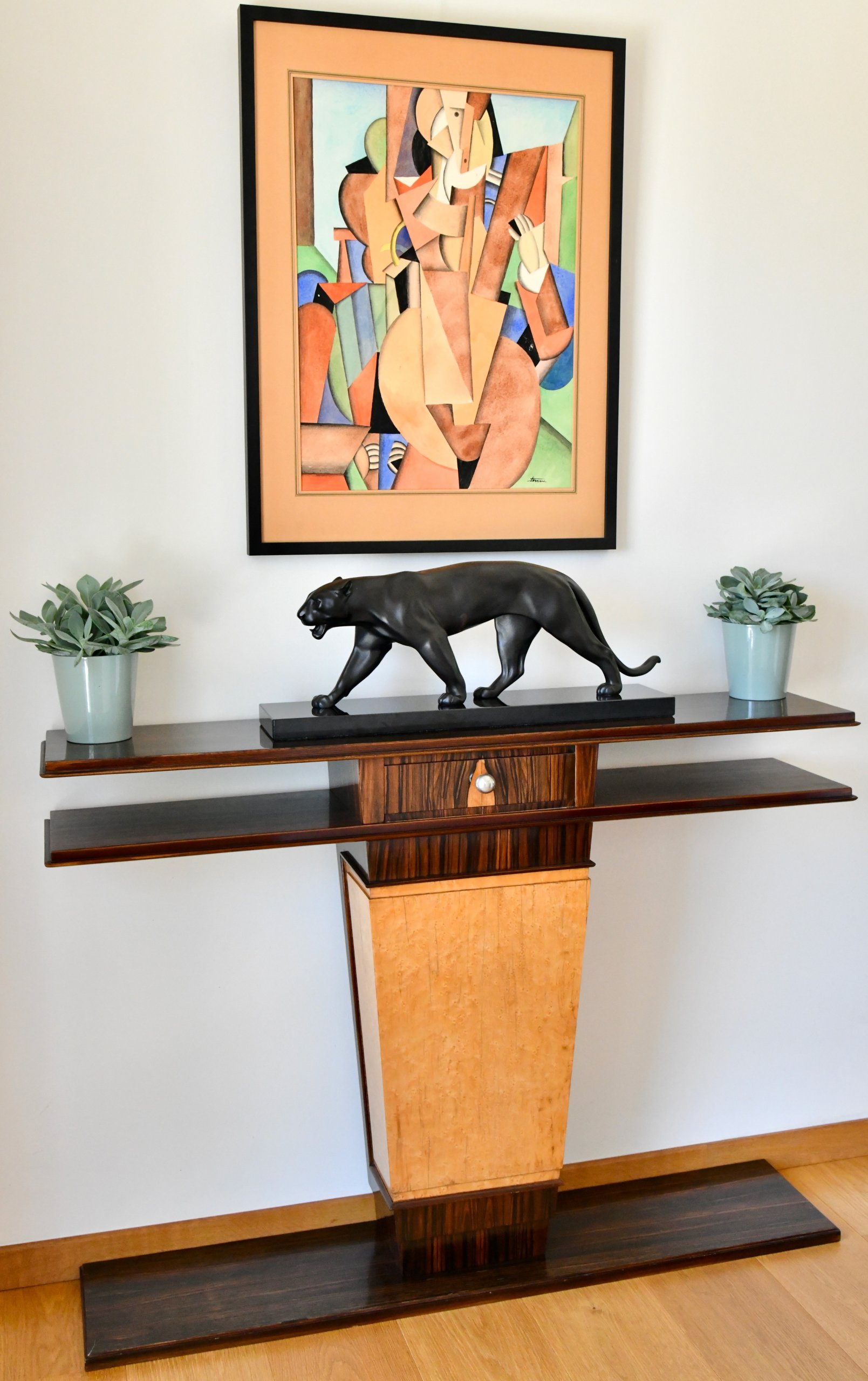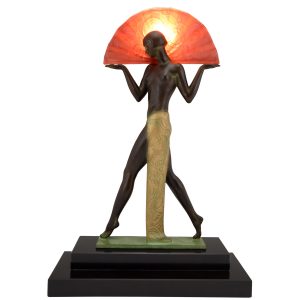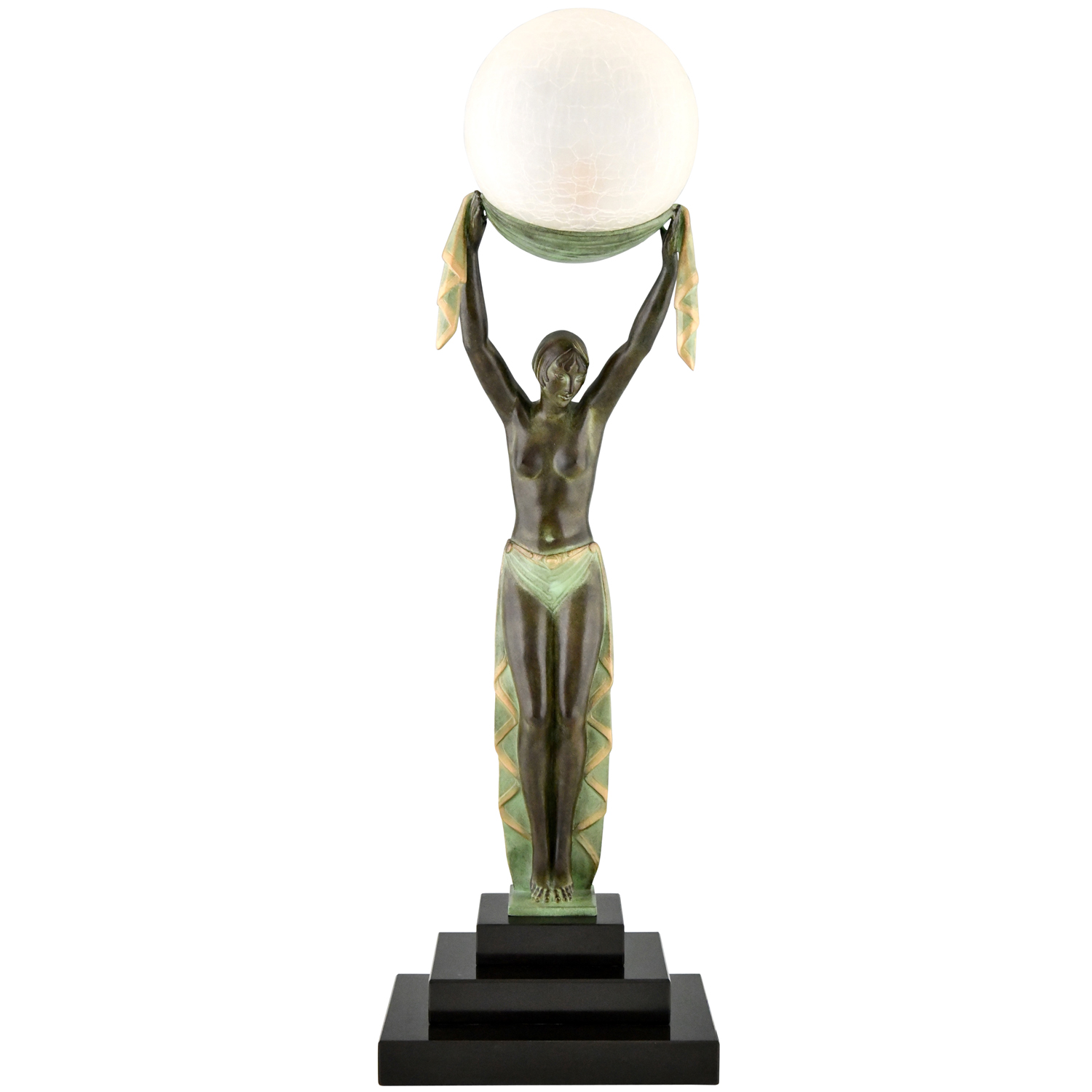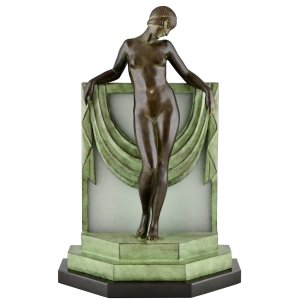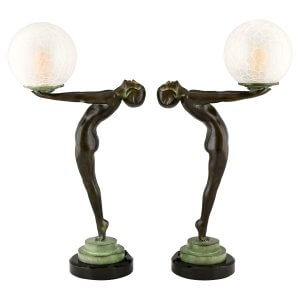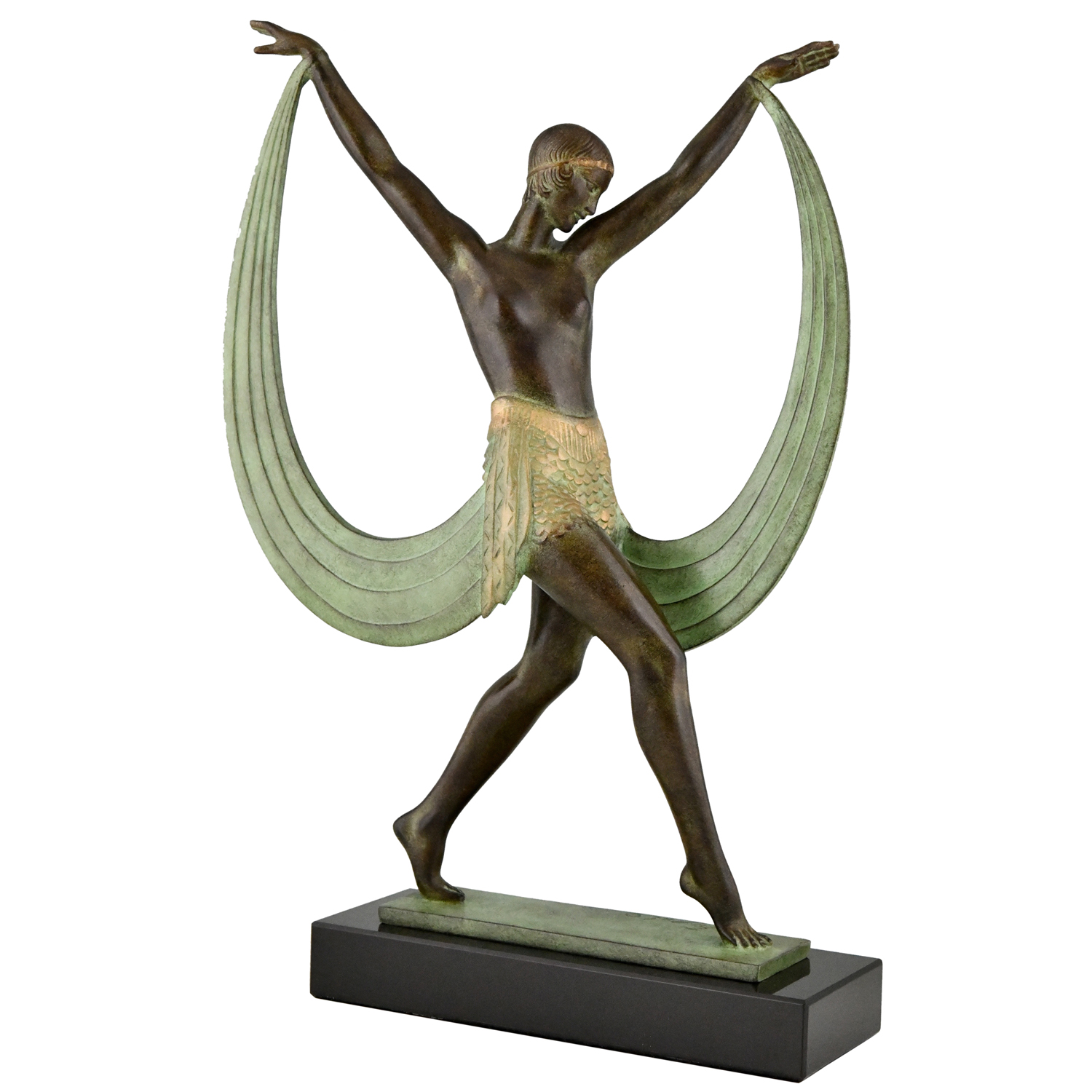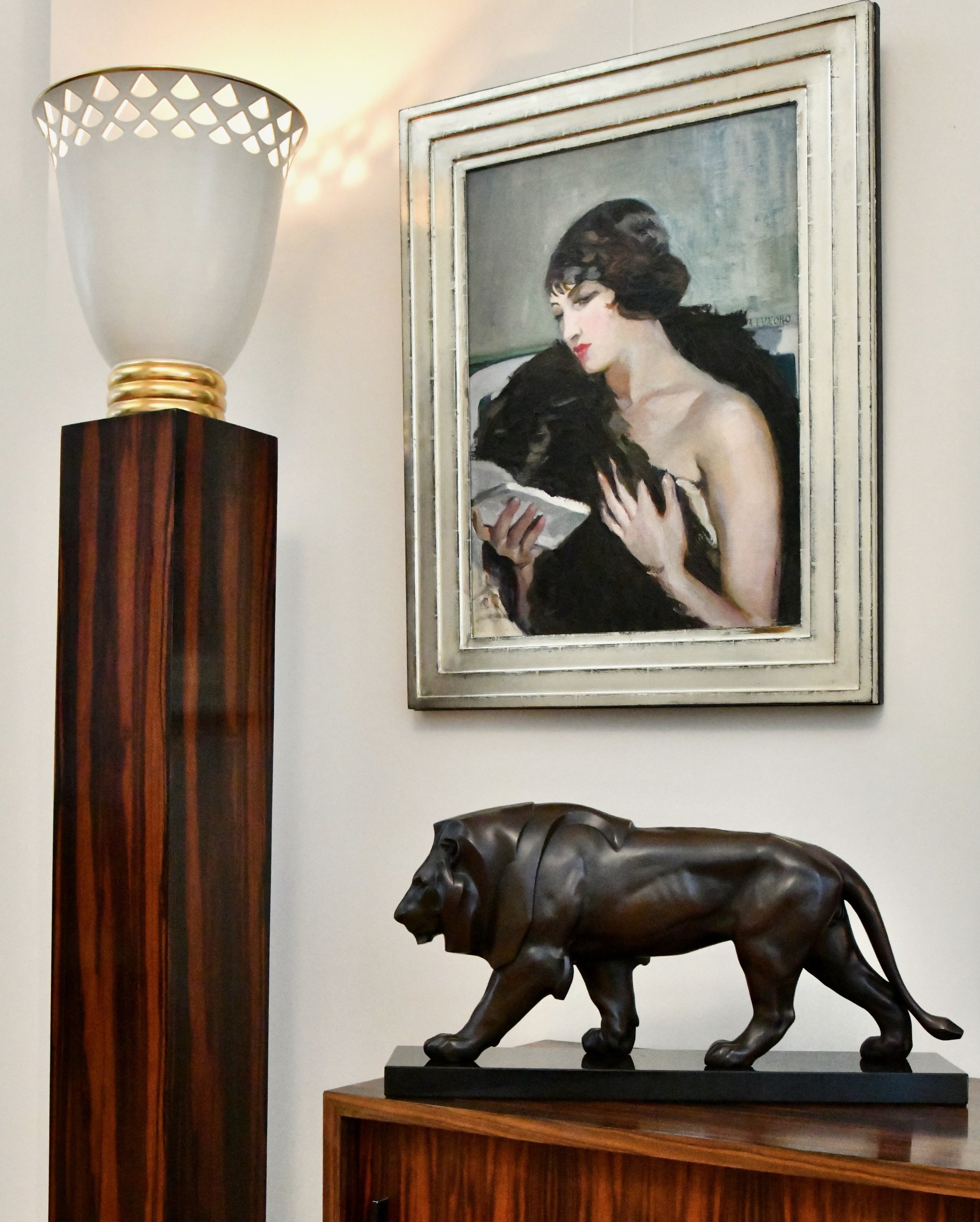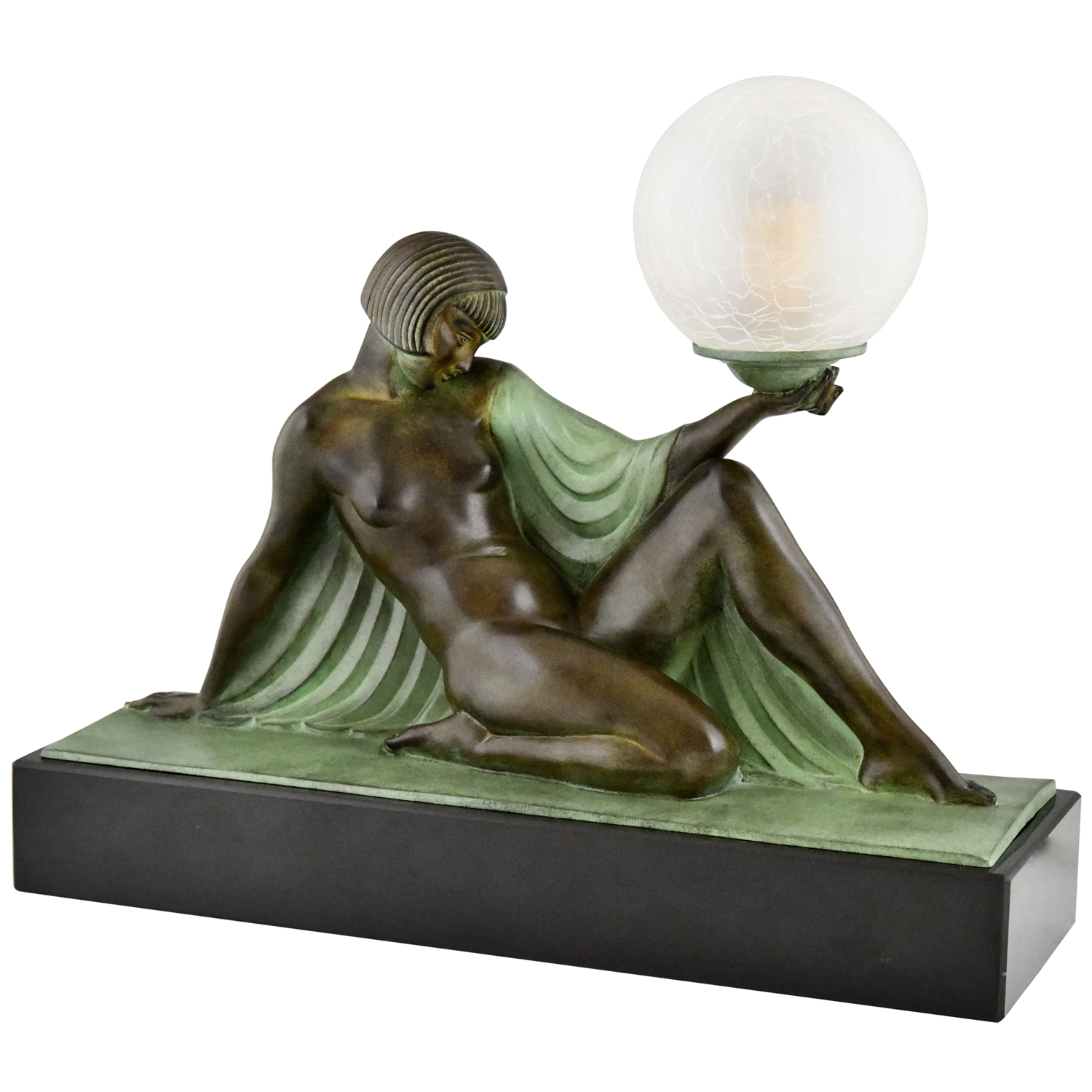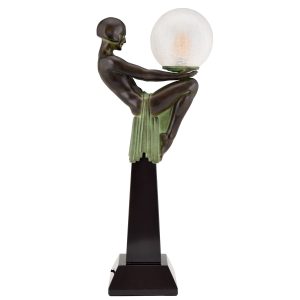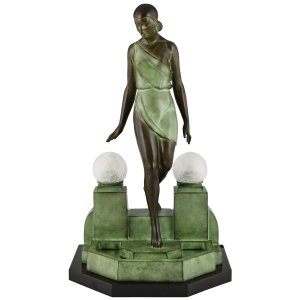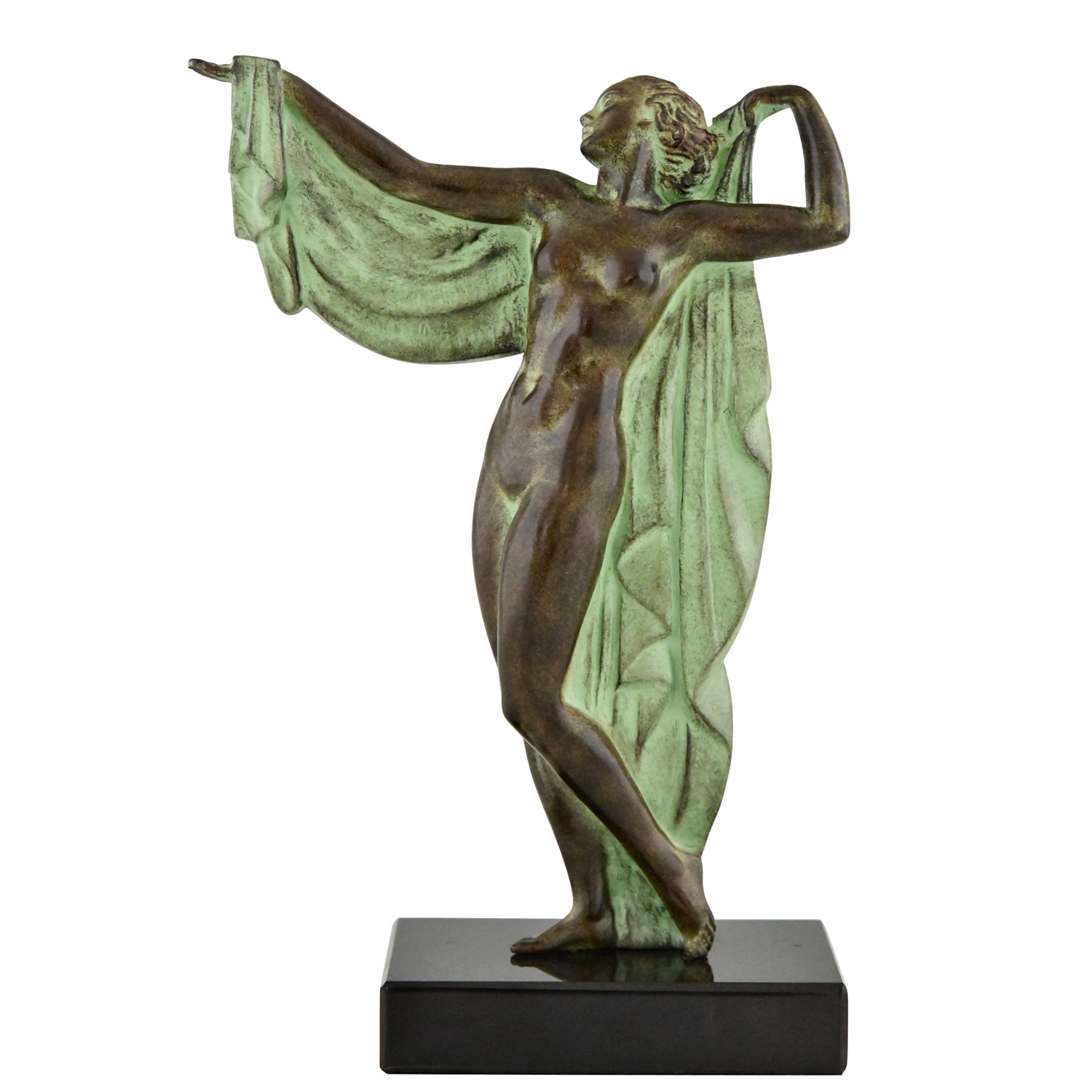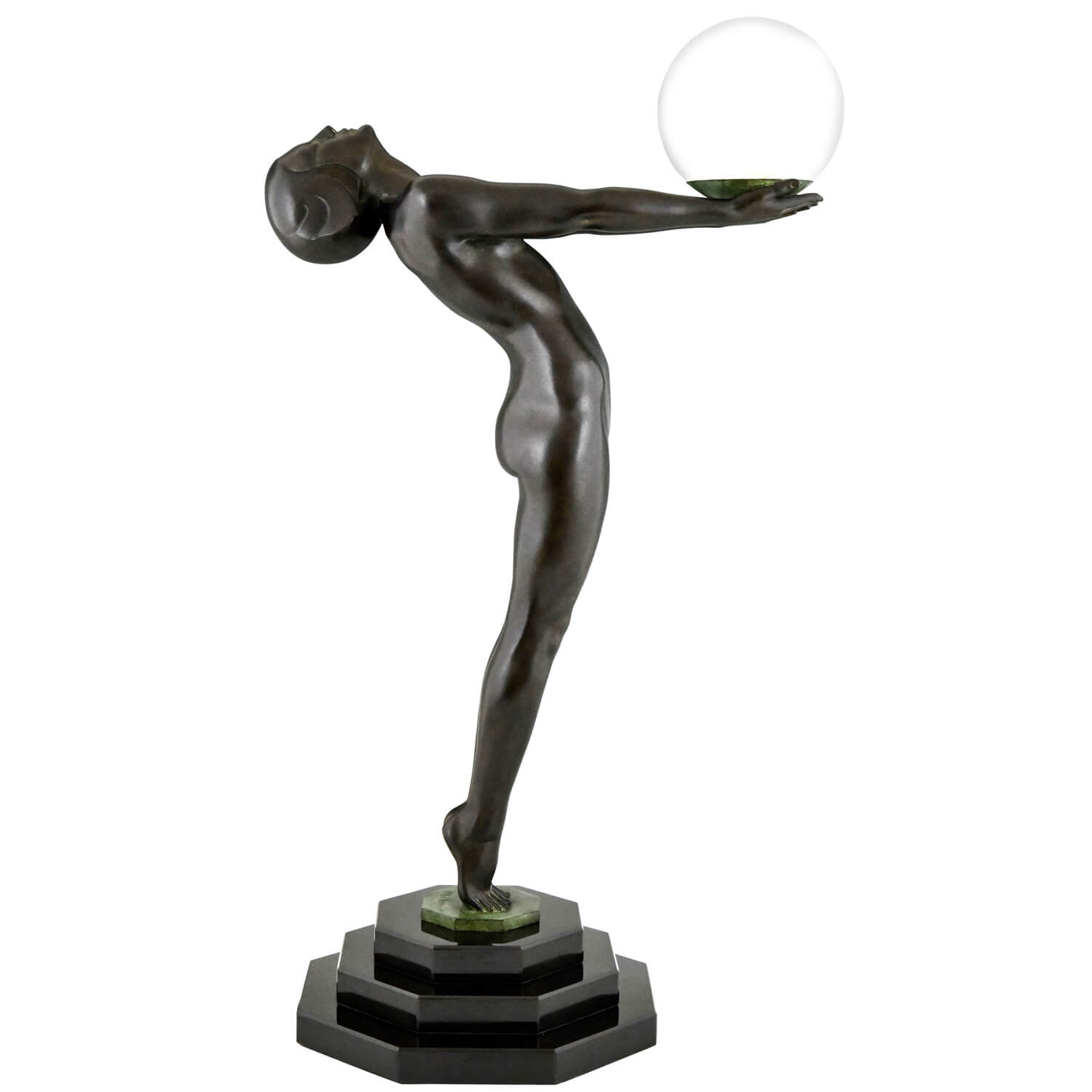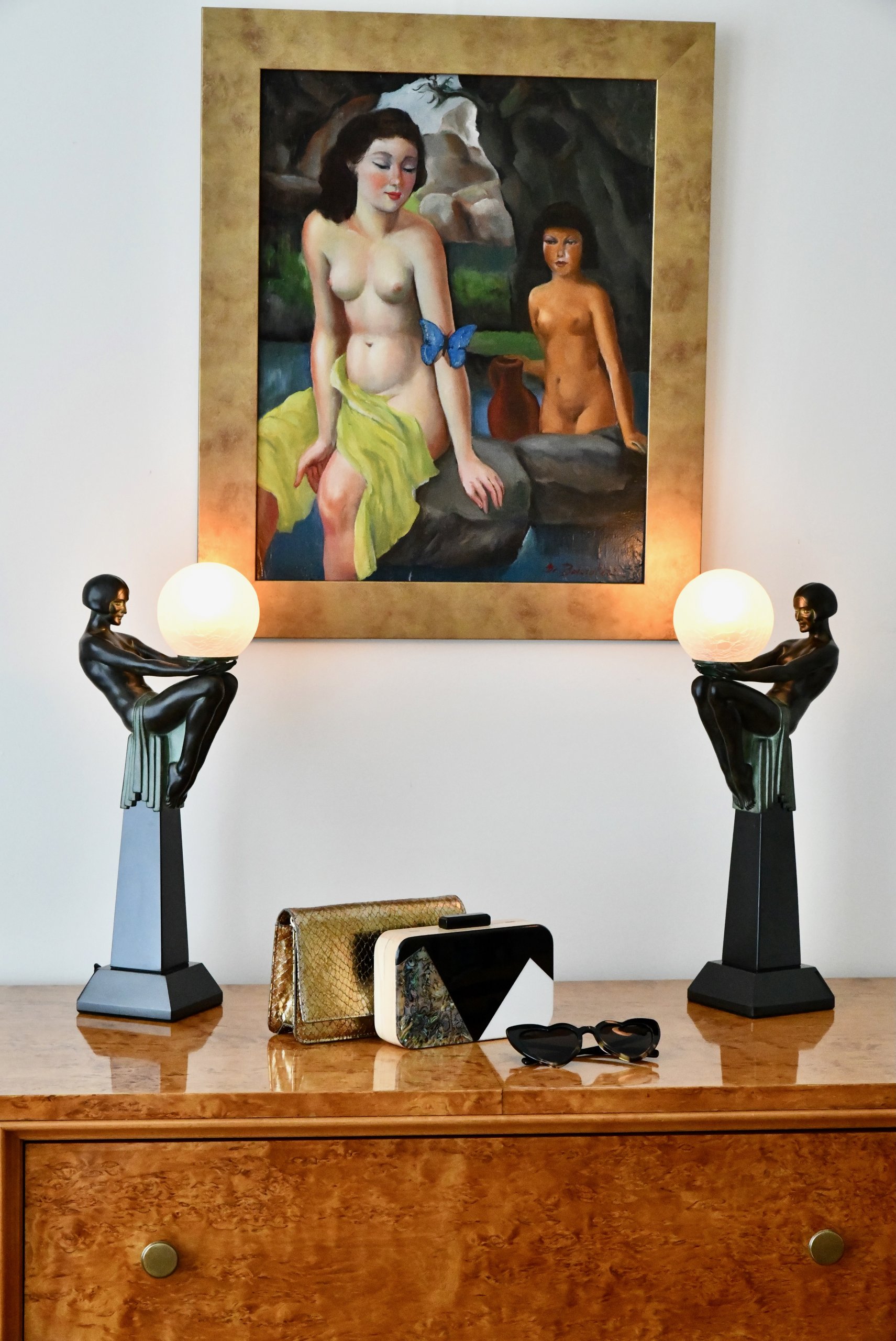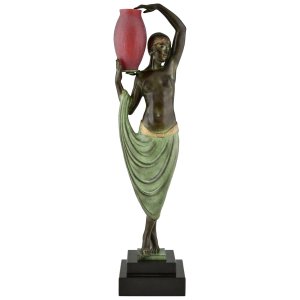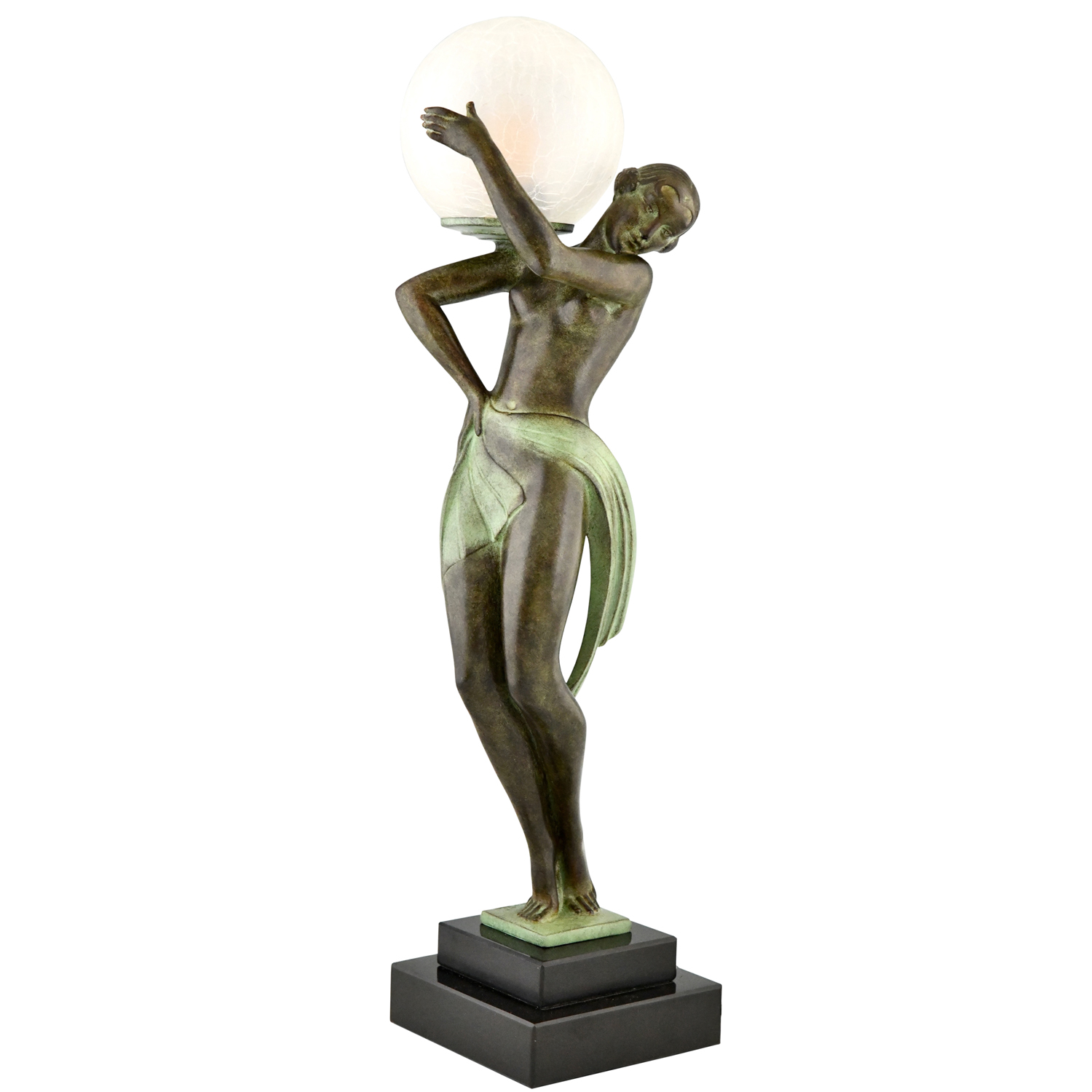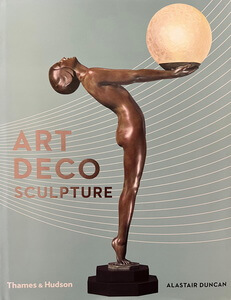
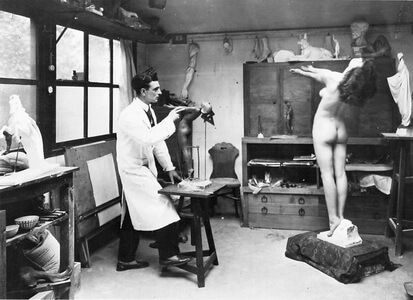
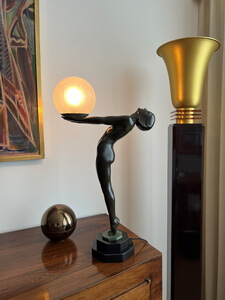
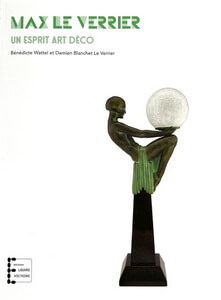
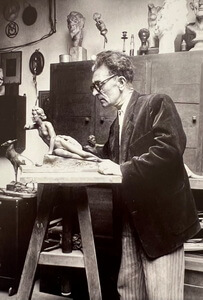
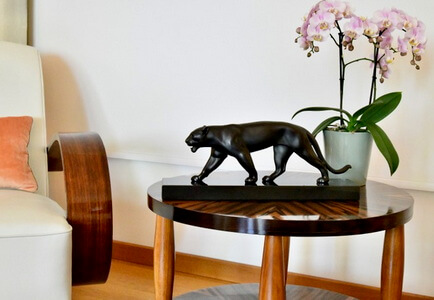

DECONAMIC is the official reseller of Max Le Verrier Art Deco lamps, sculptures and objects for the Benelux.
All items are cast by the great-grandson of Max Le Verrier using the original moulds.
A certificate of authenticity is provided with each item.
Max le Verrier
-
Art Deco style lamp standing nude Clarté LUMINA 65 cm
Max Le Verrier -
Art Deco style panther sculpture BAGHERA.
Max Le Verrier -
Art Deco style lamp ESPANA Spanish dancer with fan
Guerbe for Max Le Verrier -
Art Deco style lamp lady with ball VERITE
Fayral, Pierre Le Faguays. -
Art Deco style lamp sculpture nude with scarf SERENITE
Fayral, Pierre Le Faguays -
Art Deco style sculpture of a dancer LYSIS
Fayral, Pierre Le Faguays. -
Art Deco style LION sculpture
Max Le Verrier -
Art Deco style lamp REVERIE seated nude with drape
Raymonde Guerbe -
Art Deco style lamp nude holding a globe ENIGME
Max Le Verrier -
Art Deco style lamp NAUSICAA lady at a fountain
Fayral, Pierre Le Faguays -
Art Deco style sculpture nude bather VENUS
Fayral, Pierre Le Faguays -
Pair of Art Deco style lamps nude holding a globe ENIGME
Max Le Verrier -
Art Deco style lamp nude with vase ODALISQUE
Fayral, Pierre Le Faguays. -
Art Deco style lamp dancer with ball FARANDOLE
Fayral, Pierre Le Faguays.
Loading...
No More Products
